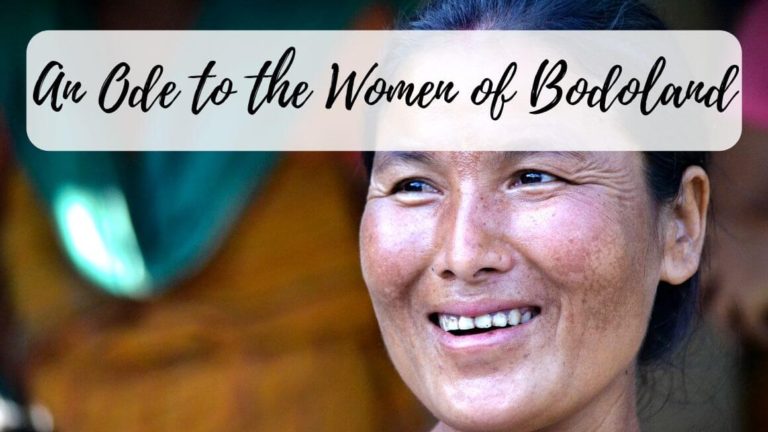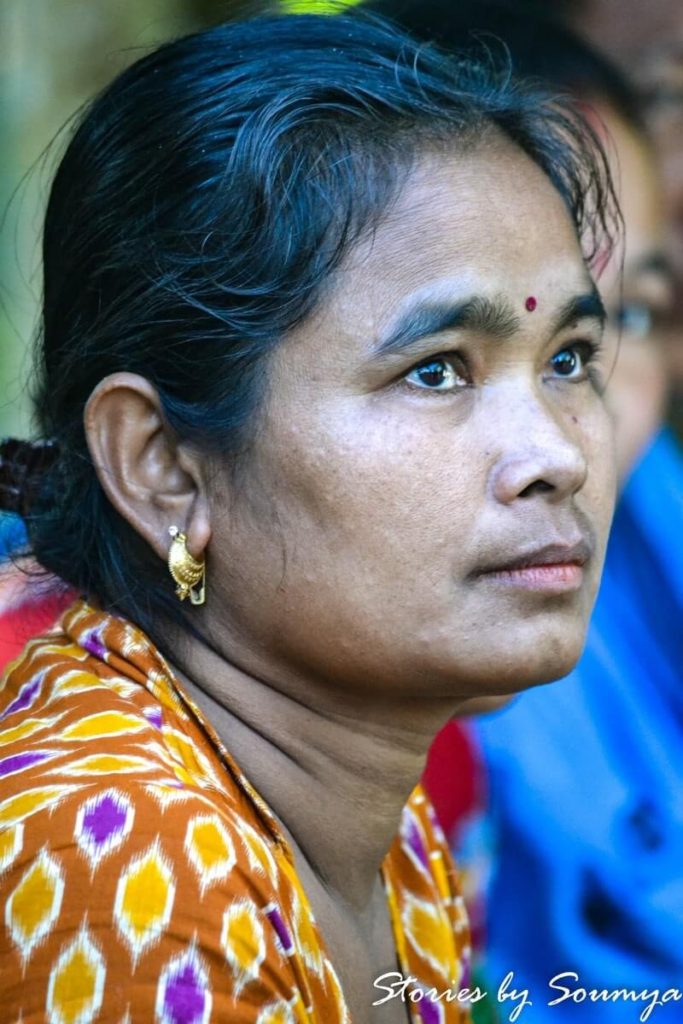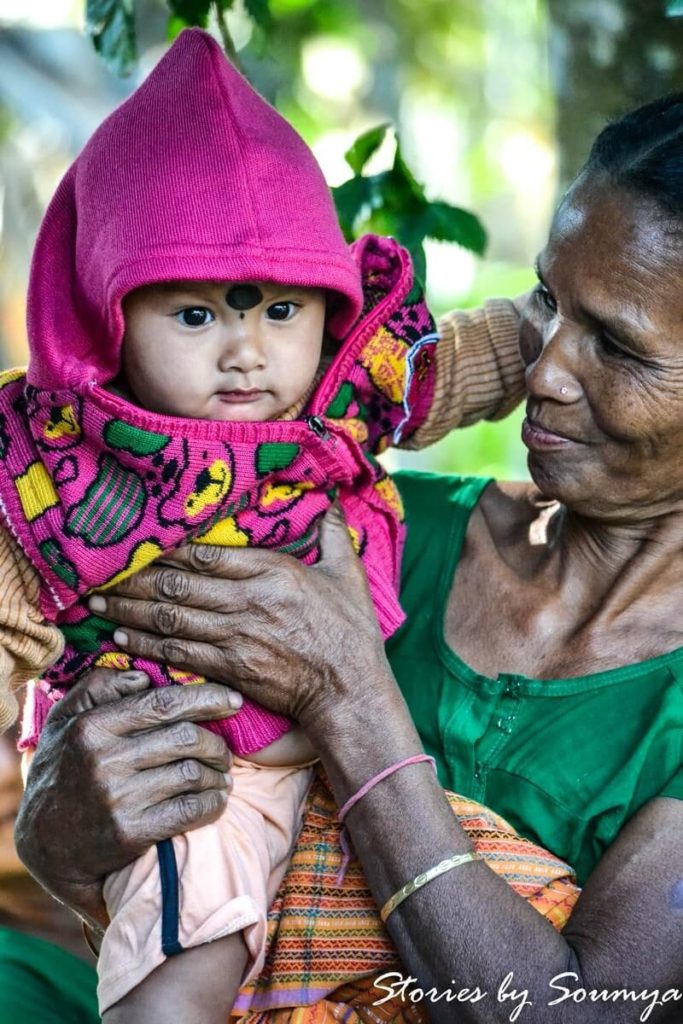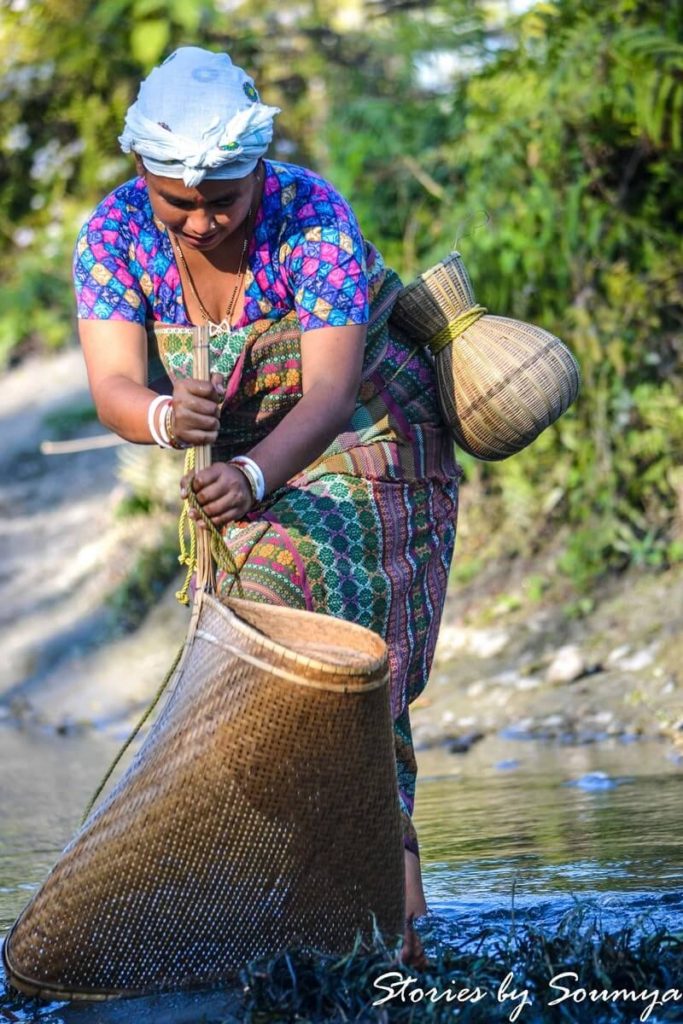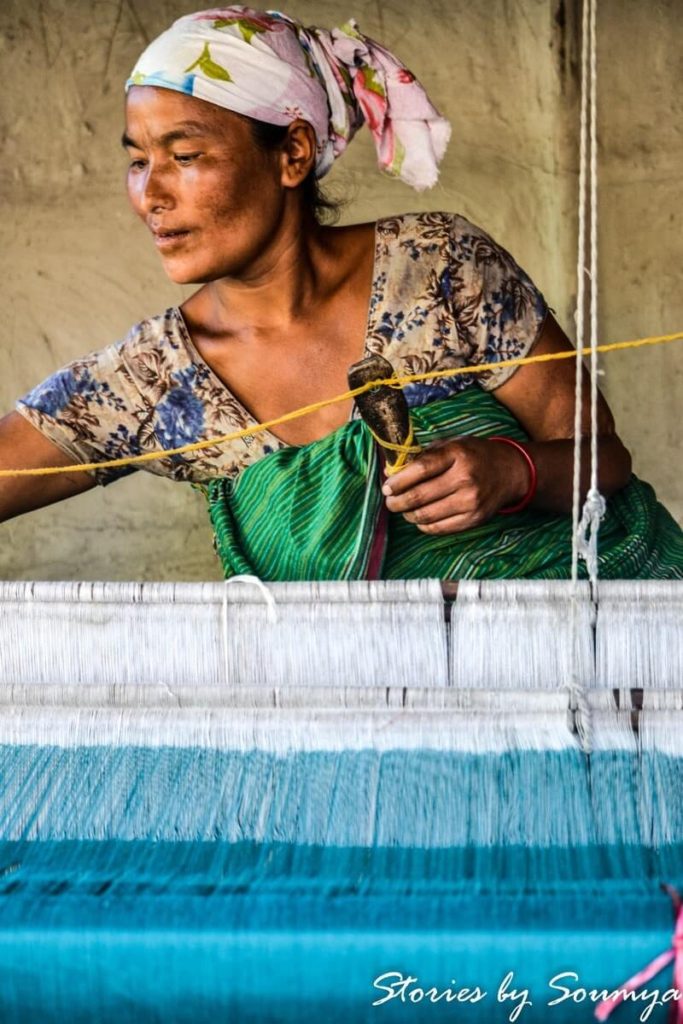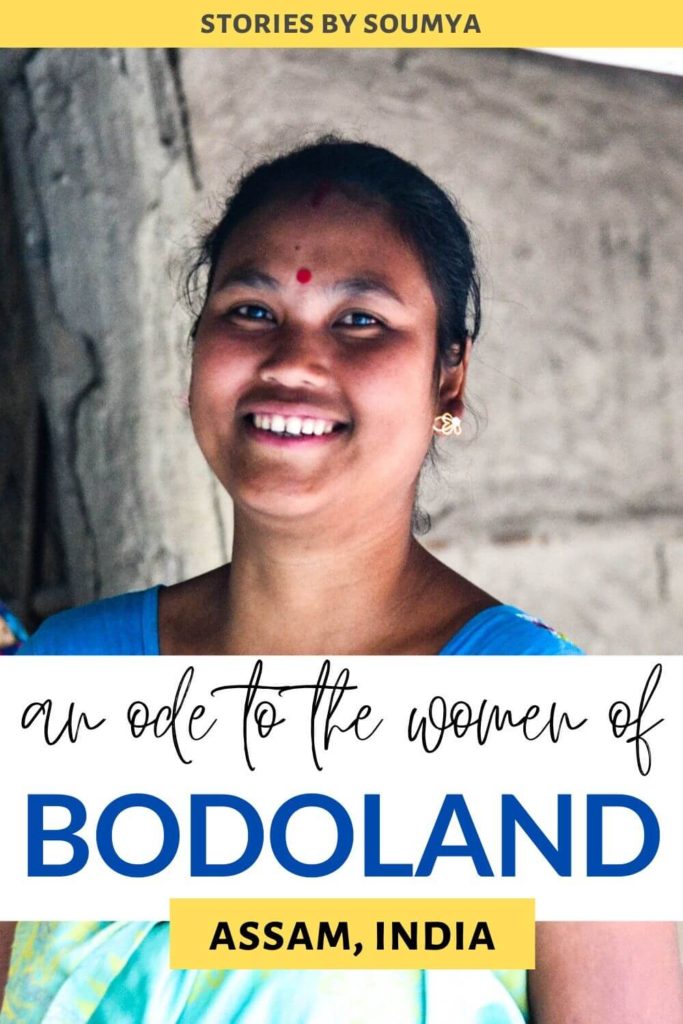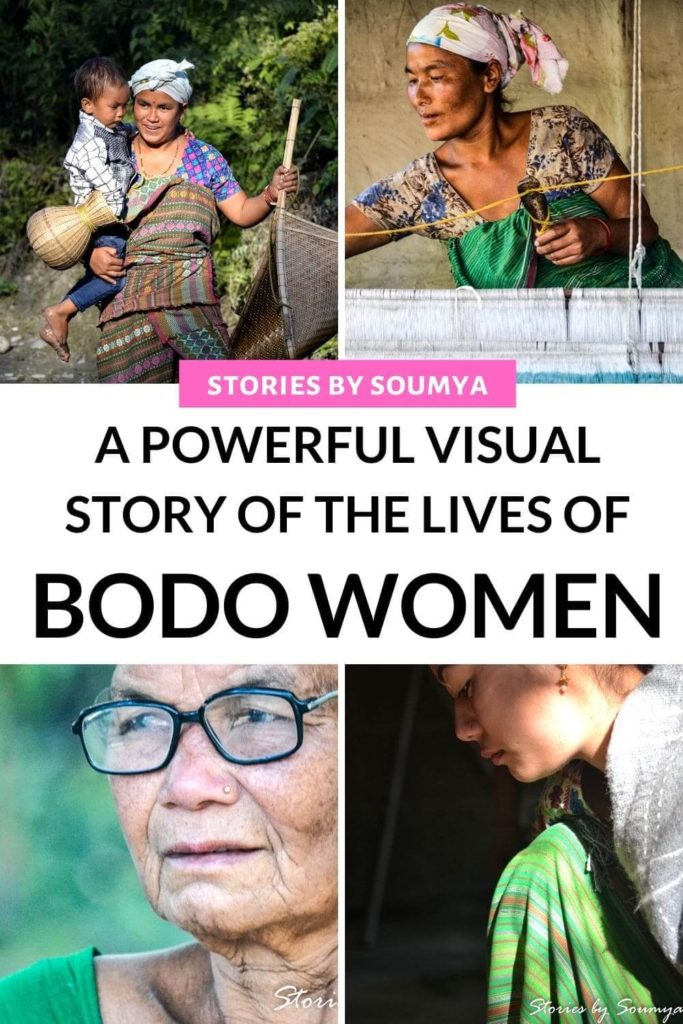Last Updated on May 25, 2020 by Soumya
When I came back from my trip to Bodoland, there were so many people who came up and asked me what the Bodo people were like.
How did they look? What did they wear? What did they eat?
These were things that I was deeply interested in too. That’s why I went ahead and wrote this exhaustive piece on Bodo people and their culture.
However. Despite being exhaustive, it felt lacking. I always had this nagging feeling that I had missed something important.
Until today, when I realized that I had missed talking in length about Bodo women. The females who really keep the world moving for Bodos. Ladies who do so much in the blink of an eye. Without whom, it would impossible to fathom the concept of Bodoland.
Call me a feminist but here’s why I saw the world in Bodo women!
How did it begin?


I got curious about Bodo women when I learned about the legendary tale of the Bodo heroine, Thengphakri. It is not common, in this part of the world, or anywhere for that matter, for kids to grow up listening to parables of female bravery. Yet! Here, I was. In Bodoland where Thengphakri was their revered hero!
A widow in the British era, Thengphakri was a tehsildar and could yield a sword if the need arose. Apparently, she dressed like a man and went around collecting taxes. She was a famous Bodo revolutionary.
Trust me, that’s a lot of courage for her times. Even for our times.
No doubt, the people of Bodoland sought to honor Thengphakri by dedicating a beautiful and profound piece of artwork at the Dwijing Festival 2020.
Obviously, I was on the lookout for many more Bodo Thengphakris during my trip!
Did I find them? Plenty. In all spheres of life!
As part of the team of Bodoland Ambassadors, I met and interacted with several Bodo women. Both at the Dwijing Festival and at the traditional Bodo village where we spent the day meeting, greeting, and eating with locals. Even at a roadside tea shop. And at the beautiful resort inside the Manas National Park. I met tenacious women everywhere.
Bodo women were all over and in charge.
At the festival, many of the food and souvenir stalls were manned womanned by Bodo women. They took care of orders, oversaw the cooking (cooked many-a-time), and served their customers.
Sidenote: Bodos make a slightly sweet snack called the Pitha (pithas are common in the East Indian cuisine) from rice flour. It is quite filling and you will find a lot of them at the Dwijing Festival. Buy some when you visit these stalls. That would make these women entrepreneurs super happy.
Recommended: Life and Culture of Bodo People and a Glimpse at Bodo Food
At the local Bodo village, we met with many Bodo women again.
Bodo women are extremely hardworking.
Bodo women are constantly afoot. They are always at their jobs which involves quite a lot.
Women do all the cooking at home. And everyday cooking involves making rice, daal, a couple of vegetarian dishes and a few non-veg ones. May also be accompanied by salads and sauces. On the day we went to the village, there were 10 veggie dishes and 4 more non-veggie ones! God knows how much we Indians eat!
They also clean up and keep the house tidy. As well as take care of the kids. Typical duties of a homemaker, you would say!
But it does not end there.
Bodo women also weave. They rear silkworms and weave their own traditional costumes. Nowadays, many women have set up small scale industries and sell their woven products. Bodos are one of the finest weavers in India’s northeast. And most of the weaving is done by the womenfolk. In fact, weaving is an essential trait a woman needs to possess at the time of marriage!
Apart from weaving, Bodo women also fish. They are in charge of catching small fish for daily meals. While men are usually equipped with more modern nets, women use traditional bamboo traps. They are called Jekhai and Khobai (pictured above).
And of course, they take care of all cooking that happens even outside the house. Be it at a temporary fest or a permanent restaurant or chai (tea) stall on the road. Women are everywhere.
According to a saying in traditional Bodo literature
Don’t cry for the loss of crops in a year
Cry if women don’t know how to work
Needless to say, a lot is expected out of a Bodo woman and she delivers all with grace and serenity.
Bodo women are paragons of beauty and simplicity.
The women of Bodoland are beautiful. Dressed in their traditional dokhonas, they look nothing short of divine.
They don’t wear a lot of jewelry. Married women sport a pair of earrings and sometimes a nose ring. And you can see a bindi and a strip of sindoor, the essential East Indian symbols of being married.
Some women are shy. But many are peppy. And happy to talk.
The best part is they are always full of smiles.
I have adorable memories of the beautiful women of Bodoland. When I scroll through my pictures today, I almost smile. I have a zillion snaps in my hard drive. Of each of these women who was a Thengphakri in her own right.
When you travel, you come back with stories. You come back with feelings that change you. And you come back with faces that stay with you forever.
When I came back from Bodoland, the faces of Bodo women stuck to me.
There was innocence in those faces. Curiosity at the sight of us, city dwellers. And a warmth unknown to many others. I was happy I had come back with these fond memories that would stay with me for life.

